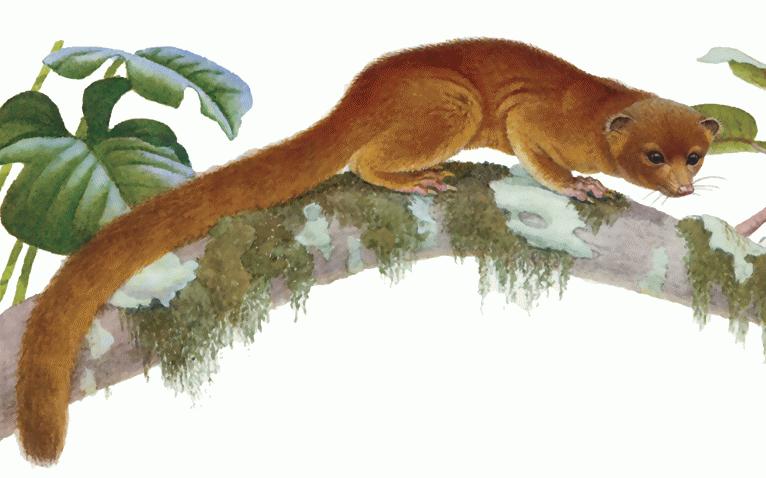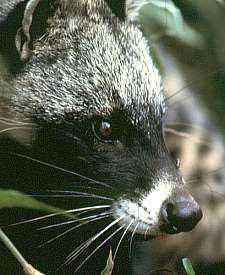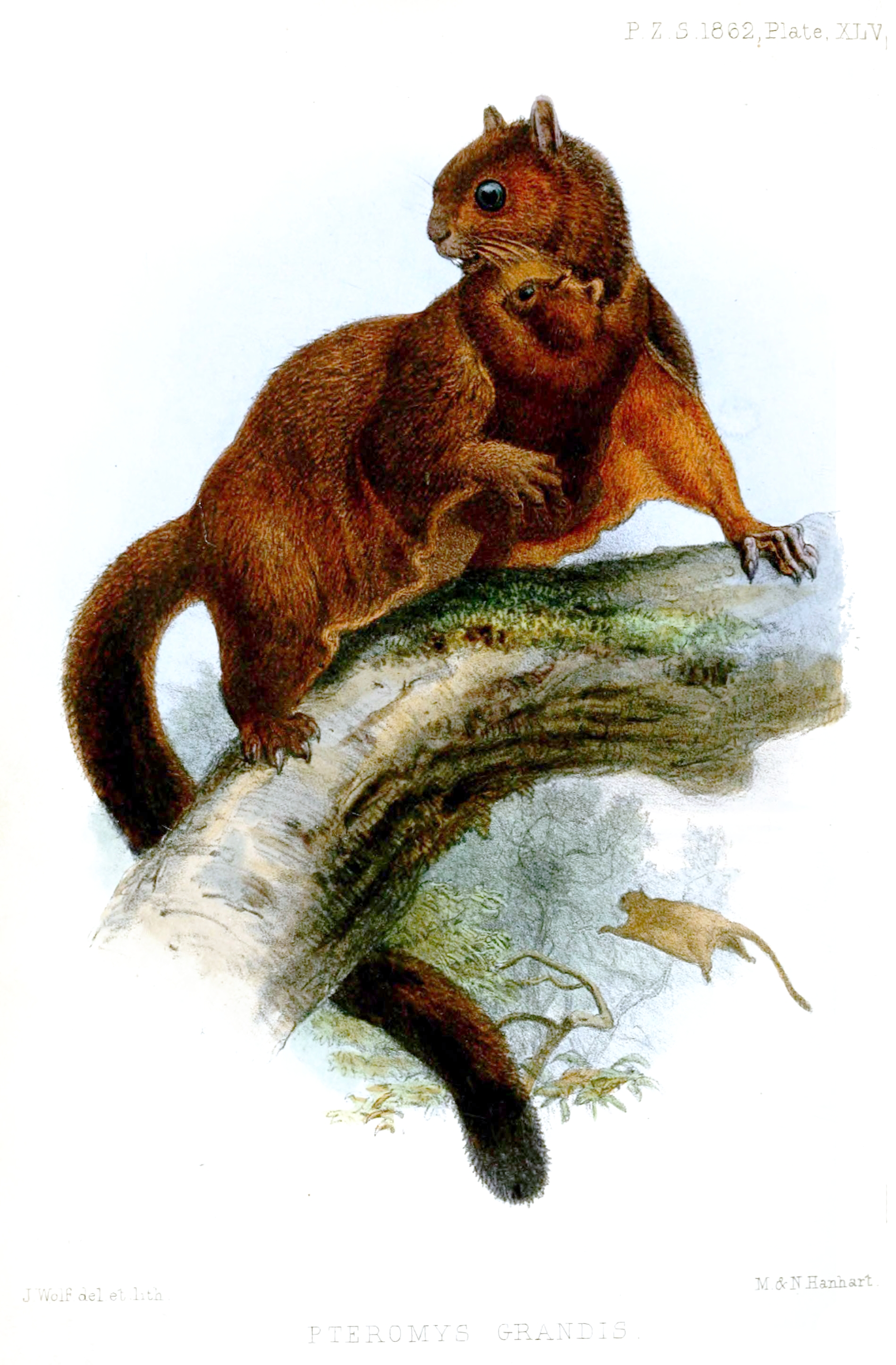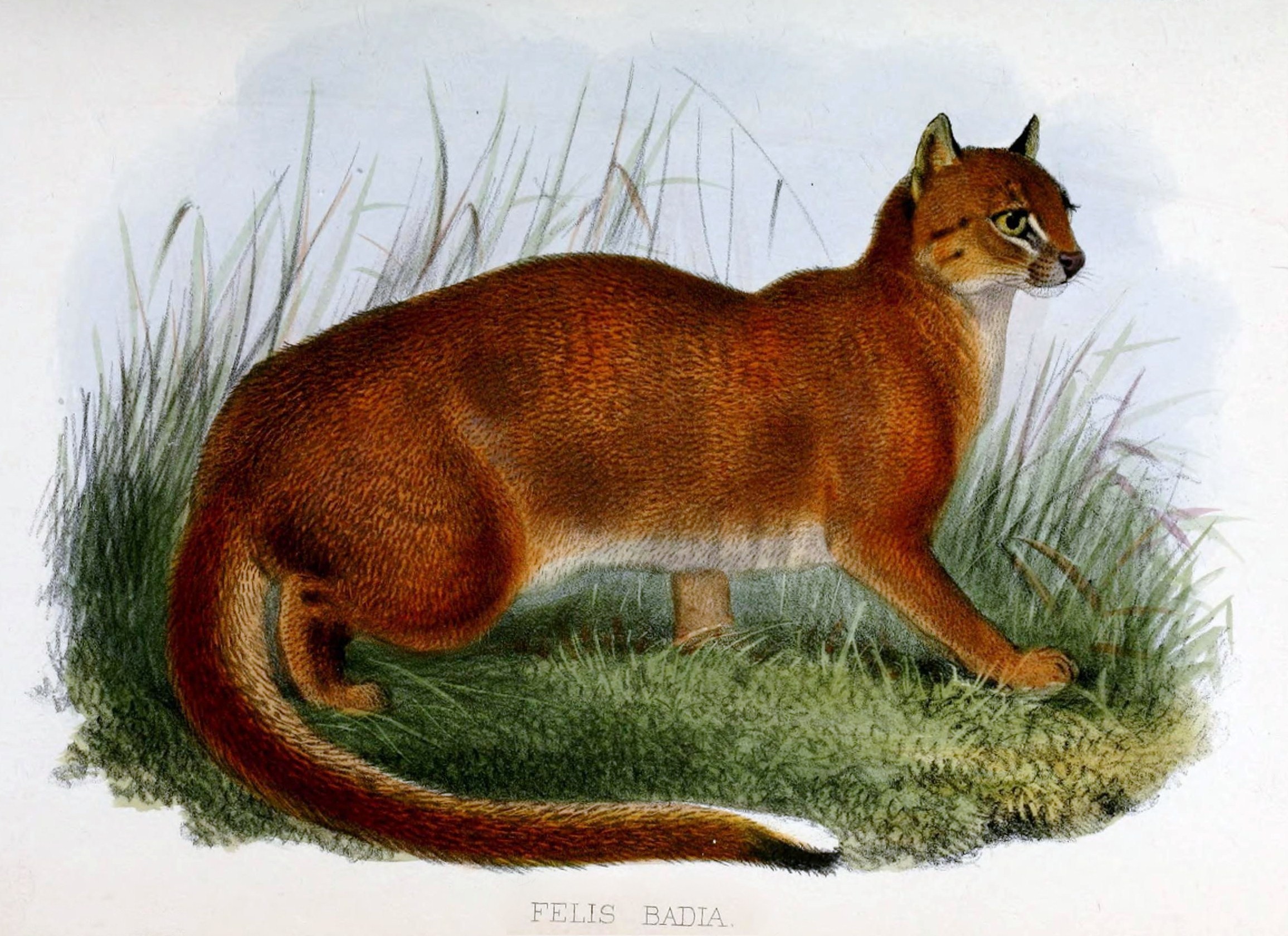|
Carnivorans Discovered In The 2000s
''This page is a list of species of the order Carnivora discovered in the 2000s. The order also contains animals once classified separately in Pinnipedia. See also parent page, Mammals discovered in the 2000s.'' Bornean clouded leopard, ''Neofelis diardi'' (2007) ''Neofelis diardi'' is a medium-sized wild cat found on Borneo, Sumatra and the Batu Islands in the Malay Archipelago and publicised under the name Bornean clouded leopard by the World Wide Fund for Nature (WWF) on March 14, 2007. Its coat is marked with irregularly-shaped, dark-edged ovals, which are said to be shaped like clouds, hence its common name. Though scientists have known of its existence since the early 19th century, it was positively identified as being a distinct species in its own right in 2006, having long been believed to be a subspecies of the mainland clouded leopard (''Neofelis nebulosa''). WWF quoted Dr. Stephen O'Brien of the U.S. National Cancer Institute as saying, "Genetic research results clearly ... [...More Info...] [...Related Items...] OR: [Wikipedia] [Google] [Baidu] |
Carnivora
Carnivora is a Clade, monophyletic order of Placentalia, placental mammals consisting of the most recent common ancestor of all felidae, cat-like and canidae, dog-like animals, and all descendants of that ancestor. Members of this group are formally referred to as carnivorans, and have evolved to specialize in eating flesh. The order is the fifth largest order of mammals, comprising at least 279 species. Carnivorans live on every major landmass and in a variety of habitats, ranging from the cold polar regions to the hyper-arid region of the Sahara Desert to the open seas. They come in a very large array of different body plans in contrasting shapes and sizes. Carnivora can be divided into two subclades: the cat-like Feliformia and the dog-like Caniformia, which are differentiated based on the structure of their ear bones and cranial features. The feliforms include families such as the felidae, cats, the hyenas, the mongooses and the viverridae, civets. The majority of felifor ... [...More Info...] [...Related Items...] OR: [Wikipedia] [Google] [Baidu] |
Camera Trap
A camera trap is a camera that is automatically triggered by a change in some activity in its vicinity, like presence of an animal or a human being. It is typically equipped with a motion sensor – usually a passive infrared (PIR) sensor or an active infrared (AIR) sensor using an infrared light beam. Camera trapping is a method for capturing wild animals on film when researchers are not present, and has been used in ecological research for decades. In addition to applications in hunting and wildlife viewing, research applications include studies of nest ecology, detection of rare species, estimation of population size and species richness, and research on habitat use and occupation of human-built structures. Camera traps, also known as trail cameras, are used to capture images of wildlife with as little human interference as possible. Since the introduction of commercial infrared-triggered cameras in the early 1990s, their use has increased. With advancements in the qua ... [...More Info...] [...Related Items...] OR: [Wikipedia] [Google] [Baidu] |
Olinguito
The olinguito (''Bassaricyon neblina'') is a mammal of the raccoon Family (biology), family Procyonidae that lives in Montane ecology#Subtropical and tropical climate, montane forests in the Andes of western Colombia and Ecuador. It was classified as belonging to a new species in 2013. The specific name ''neblina'' is Spanish for fog or mist, referring to the cloud forest habitat of the olinguito. On 22 May 2014, the International Institute for Species Exploration declared the olinguito as one of the "Top 10 New Species of 2014" among species discovered in 2013. It is the first new carnivoran mammal described in the Western Hemisphere in 35 years. Description The olinguito is distinct from the other species within the genus, popularly known as "olingos", and also from the kinkajou (kinkajous resemble olingos, but are not closely related). Its average weight is , making it the smallest procyonid. The animal is an Omnivore, omnivorous frugivore that eats mainly fruits (such as fi ... [...More Info...] [...Related Items...] OR: [Wikipedia] [Google] [Baidu] |
Djibouti
Djibouti, ar, جيبوتي ', french: link=no, Djibouti, so, Jabuuti officially the Republic of Djibouti, is a country in the Horn of Africa, bordered by Somalia to the south, Ethiopia to the southwest, Eritrea in the north, and the Red Sea and the Gulf of Aden to the east. The country has an area of . In antiquity, the territory, together with Ethiopia, Eritrea and Somaliland, was part of the Land of Punt. Nearby Zeila, now in Somaliland, was the seat of the medieval Adal and Ifat Sultanates. In the late 19th century, the colony of French Somaliland was established following treaties signed by the ruling Dir Somali sultans with the French, and its railroad to Dire Dawa (and later Addis Ababa) allowed it to quickly supersede Zeila as the port for southern Ethiopia and the Ogaden. It was renamed the French Territory of the Afars and the Issas in 1967. A decade later, the Djiboutian people voted for independence. This officially marked the establishment of the ''Rep ... [...More Info...] [...Related Items...] OR: [Wikipedia] [Google] [Baidu] |
African Civet
The African civet (''Civettictis civetta'') is a large viverrid native to sub-Saharan Africa, where it is considered common and widely distributed in woodlands and secondary forests. It is listed as Least Concern on the IUCN Red List since 2008. In some countries, it is threatened by hunting, and wild-caught individuals are kept for producing civetone for the perfume industry. The African civet is primarily nocturnal and spends the day sleeping in dense vegetation, but wakes up at sunset. It is a wikt:solitary, solitary mammal with a unique coloration: the black and white blotches covering its coarse pelage and rings on the tail are an effective Crypsis, cryptic pattern. The black bands surrounding its eyes closely resemble those of the raccoon. Other distinguishing features are its disproportionately large hindquarters and its erectile dorsal crest. It is an omnivorous generalist, preying on small vertebrates, invertebrates, eggs, carrion, and vegetable matter. It is one of th ... [...More Info...] [...Related Items...] OR: [Wikipedia] [Google] [Baidu] |
Turkmenistan
Turkmenistan ( or ; tk, Türkmenistan / Түркменистан, ) is a country located in Central Asia, bordered by Kazakhstan to the northwest, Uzbekistan to the north, east and northeast, Afghanistan to the southeast, Iran to the south and southwest and the Caspian Sea to the west. Ashgabat is the capital and largest city. The population is about 6 million, the lowest of the Central Asian republics, and Turkmenistan is one of the most sparsely populated nations in Asia. Turkmenistan has long served as a thoroughfare for other nations and cultures. Merv is one of the oldest oasis-cities in Central Asia, and was once the biggest city in the world. It was also one of the great cities of the Islamic world and an important stop on the Silk Road. Annexed by the Russian Empire in 1881, Turkmenistan figured prominently in the anti-Bolshevik movement in Central Asia. In 1925, Turkmenistan became a constituent republic of the Soviet Union, the Turkmen Soviet Socialist Repu ... [...More Info...] [...Related Items...] OR: [Wikipedia] [Google] [Baidu] |
Ratel
The honey badger (''Mellivora capensis''), also known as the ratel ( or ), is a mammal widely distributed in Africa, Southwest Asia, and the Indian subcontinent. Because of its wide range and occurrence in a variety of habitats, it is listed as Least Concern on the IUCN Red List. It is the only living species in the genus ''Mellivora'' and in the mustelid subfamily Mellivorinae. Despite its name, the honey badger does not closely resemble other badger species; instead, it bears more anatomical similarities to weasels. It is primarily a carnivorous species and has few natural predators because of its thick skin, strength and ferocious defensive abilities. Taxonomy ''Viverra capensis'' was the scientific name used by Johann Christian Daniel von Schreber in 1777 who described a honey badger skin from the Cape of Good Hope. ''Mellivorae'' was proposed as name for the genus by Gottlieb Conrad Christian Storr in 1780. Mellivorina was proposed as a tribe name by John Edward Gray i ... [...More Info...] [...Related Items...] OR: [Wikipedia] [Google] [Baidu] |
Tanzania
Tanzania (; ), officially the United Republic of Tanzania ( sw, Jamhuri ya Muungano wa Tanzania), is a country in East Africa within the African Great Lakes region. It borders Uganda to the north; Kenya to the northeast; Comoro Islands and the Indian Ocean to the east; Mozambique and Malawi to the south; Zambia to the southwest; and Rwanda, Burundi, and the Democratic Republic of the Congo to the west. Mount Kilimanjaro, Africa's highest mountain, is in northeastern Tanzania. According to the United Nations, Tanzania has a population of million, making it the most populous country located entirely south of the equator. Many important hominid fossils have been found in Tanzania, such as 6-million-year-old Pliocene hominid fossils. The genus Australopithecus ranged across Africa between 4 and 2 million years ago, and the oldest remains of the genus ''Homo'' are found near Lake Olduvai. Following the rise of '' Homo erectus'' 1.8 million years ago, humanity spread ... [...More Info...] [...Related Items...] OR: [Wikipedia] [Google] [Baidu] |
Lowe's Servaline Genet
The servaline genet (''Genetta servalina'') is a genet species native to Central Africa. As it is widely distributed and considered common, it is listed as Least Concern on the IUCN Red List. Characteristics The servaline genet's fur is rufous with black spots on neck, back and sides. Its feet are black. Its long tail is banded with wide black and narrow white rings.Pucheran, J. (1855)''Genetta servalina'' Revue et magasin de zoologie pure et appliquée: 154. It is short-haired and has a dark broken stripe along the spine. The tip of its tail is bright.Gaubert, P., Taylor, P. J., & Veron, G. (2005)Integrative taxonomy and phylogenetic systematics of the genets (Carnivora, Viverridae, ''Genetta''): a new classification of the most speciose carnivoran genus in Africa In: Huber, B. A., Sinclair, B. J., Lampe, K.-H. (eds.) African Biodiversity: Molecules, Organisms, Ecosystems. Proceedings of the 5th International Symposium of Tropical Biology, Museum König, Bonn. Springer. Pp. 37 ... [...More Info...] [...Related Items...] OR: [Wikipedia] [Google] [Baidu] |
Red Giant Flying Squirrel
The red giant flying squirrel or common giant flying squirrel (''Petaurista petaurista'') is a species of rodent in the family Sciuridae (squirrels). It is found in a wide variety of forest–types, plantations and more open habitats with scattered trees in Southeast Asia, ranging north to the Himalayas and southern and central China. One of the largest arboreal squirrels, all populations have at least some reddish-brown above and pale underparts, but otherwise there are significant geographic variations in the colours. The taxonomic position of those in the Sundaic region is generally agreed upon, but there is considerable uncertainty about the others, which variously have been included in this or other species, or recognized as their own species. Like other flying squirrels, the red giant flying squirrel is mostly nocturnal and able to glide (not actually fly like a bat) long distances between trees by spreading out its patagium, skin between its limbs. It is a herbivore a ... [...More Info...] [...Related Items...] OR: [Wikipedia] [Google] [Baidu] |
Thomas' Flying Squirrel
Thomas's flying squirrel (''Aeromys thomasi'') is a species of rodent in the family Sciuridae. It is one of two species in the genus ''Aeromys''. It is found in Indonesia and Malaysia Malaysia ( ; ) is a country in Southeast Asia. The federation, federal constitutional monarchy consists of States and federal territories of Malaysia, thirteen states and three federal territories, separated by the South China Sea into two r .... References *Thorington, R. W. Jr. and R. S. Hoffman. 2005. Family Sciuridae. pp. 754–818 ''in'' Mammal Species of the World a Taxonomic and Geographic Reference. D. E. Wilson and D. M. Reeder eds. Johns Hopkins University Press, Baltimore. Aeromys Rodents of Malaysia Rodents of Indonesia Mammals described in 1900 Taxa named by Charles Hose Taxonomy articles created by Polbot {{Squirrel-stub ... [...More Info...] [...Related Items...] OR: [Wikipedia] [Google] [Baidu] |
Bay Cat
The bay cat (''Catopuma badia''), also known as the Bornean bay cat, is a small wild cat endemic to the island of Borneo that appears to be relatively rare compared to sympatric wild cats, based on the paucity of historical, as well as recent records. Since 2002, it has been listed as Endangered on the IUCN Red List because it is estimated that fewer than 2,500 mature individuals exist, and that the population declined in the past. The bay cat has been recorded as rare and seems to occur at relatively low density, even in pristine habitat. Taxonomy and evolution ''Felis badia'' was the scientific name proposed by John Edward Gray in 1874, who first described a bay cat skin and skull collected by Alfred Russel Wallace in 1856 in Sarawak. This cat was first thought to be a kitten of an Asian golden cat. In 1932, Reginald Innes Pocock placed the species in the monotypic genus ''Badiofelis''. In 1978, it was placed in the genus ''Catopuma''. Tissue and blood samples were acquired on ... [...More Info...] [...Related Items...] OR: [Wikipedia] [Google] [Baidu] |
.jpg)





